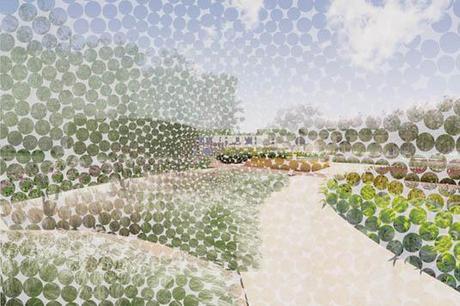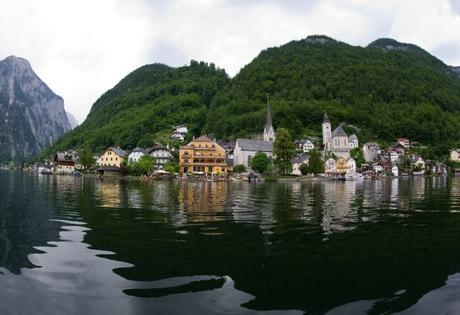
(Illustration: Untitled, Diana Balmori, 2010)
The luminous whitescape of Greenland, as Isabel Hilton tells it, is otherworldy in the sense that its endless plateau of ice is like a world announcing another world—a forbidding geologist’s paradise, where you can either get sickened into boredom and alcoholism, or you can scan fjords in search of rescuing signs of cattle and sail. Cycles and layers of submerged extensions construct a nuanced history of geographic crossing that sharpens ingenious skills of self-sufficiency.
To squint is to shield your eyes in the sun, to board a ferry is to imagine a faraway land: the idea of Jakarta on the china plates, chipped and painted acquamarine, or the focal point of Jerusalem, whitewashed brick walls with murky pots of artichokes. On the crystalline seas around the Arctic a sense of white-blue apocalypse begins to grow, its tipping point in the melting glaciers, in the fat body of a walrus, in the polluted toxins that glimmer beyond the archipelago. It is the integrated design between the architectures of the game and landscape practice that has shaped the football of northern professionals such as Michael Laudrup and Jari Litmanen, making of wilderness the proper arena for action. Laudrup and Litmanen have revolutionized soccer because of their understanding of climate. Their darting passes have been punctuated by sudden shifts from warm to cold: irrefutable evidence of life. It was the same, ominous fever that is gripping Greenland, whose ice cap, is roaring with internal torrents, dripping and running, dissolving dull Scandinavian drones—now cooling, now foaming—like a line written by Arild Andersen, a Norwegian bass player whose jazz scuttles and swims around the edges of down-welling like Eskimo migrants rely on kayaks and harpoons.

Hardly a Greenlander, yet patriarchal and sharp as a whaler, Francesco Guidolin has long been dreaming of the ice pack. He marries, he settles, he accepts challenges. He bores with idleness, delights in restraint. He takes up players when they are puppies, roaming free like a dozen of huskies on the outskirts of town. From time to time his career erupts in a howling success that echoes to every corner and in every angle reverberates of the native slops on the Dolomites. Just how suited to Guidolin is the idea of frozen Hyperborean spaces appears in a recent interview, where he admits:
Maybe it’s a vague call. . . to coach in the Far North, small teams but with a defined history. I am thinking of Hertha Berlin, of Southampton. It’s a blurred North, which spans from Brittany to Russia.
Drifting like the undercurrents in a fjord, Guidolin’s ethereal statement is tribute to resilience and architectural obsession. It makes you want to walk along the shores of an alpine lake, across the surface of which is reflected a rural village. The day is spectral, the water is green, there is apparently no disharmony between the natural and what is manmade. Tactical thinking, if I may say so, becomes a way of seeing things from an aquatic point of view—a perspective where the bridges quiver, the symbol ✝ marks the place of the sacrifice, and taking high-lines of defense and that sort of thing seriously is like trying to interpret the shapes made by flights of storks in the sky. ♦

